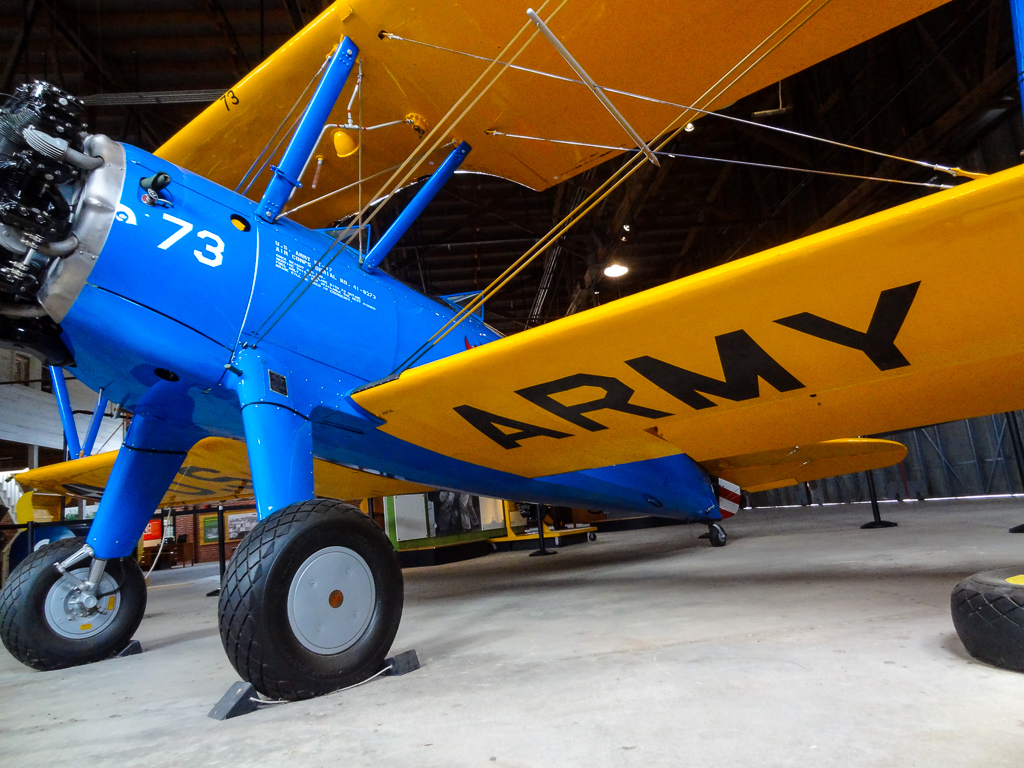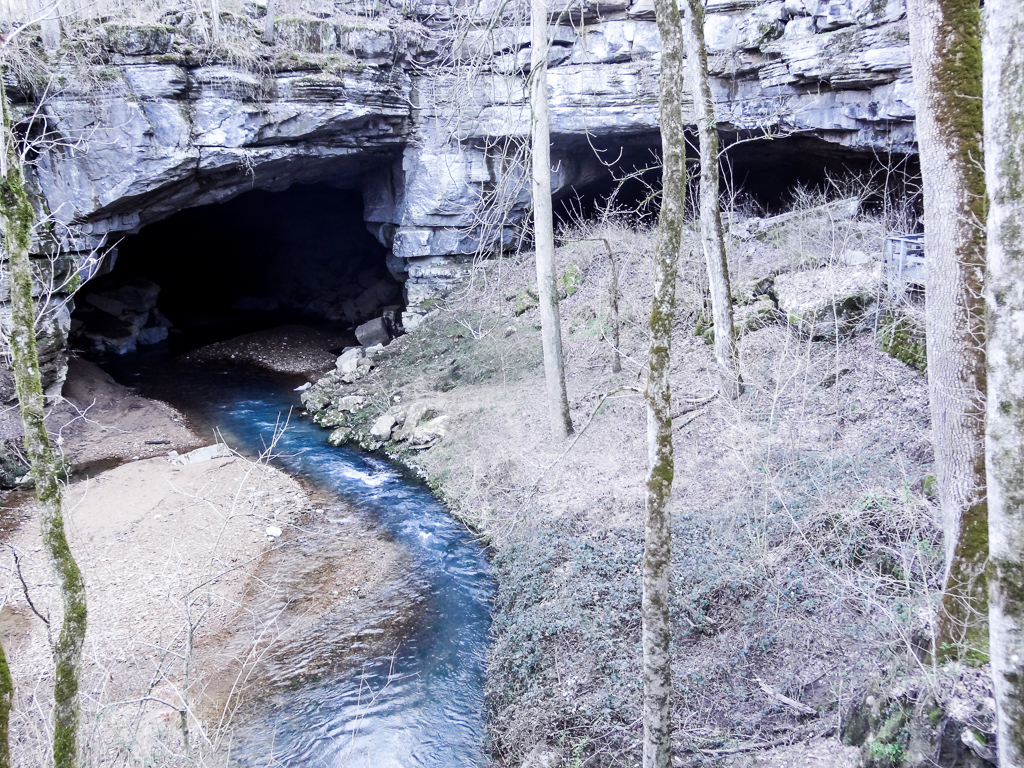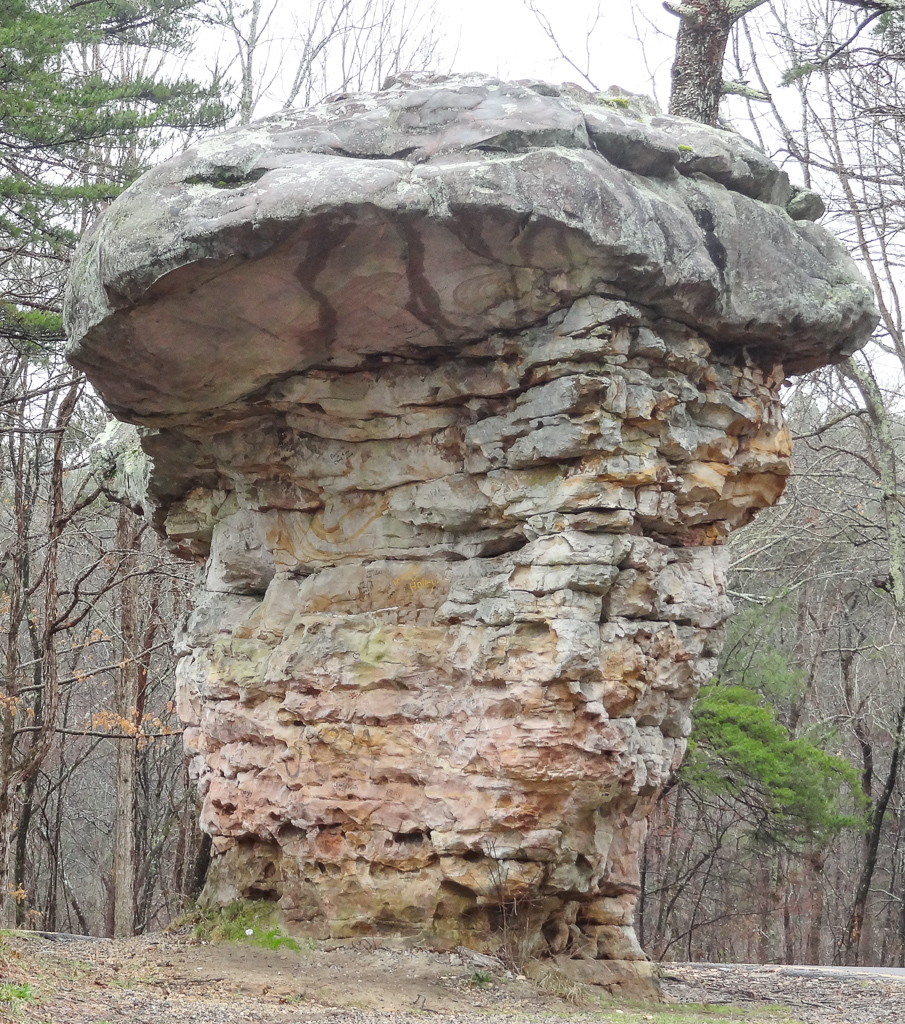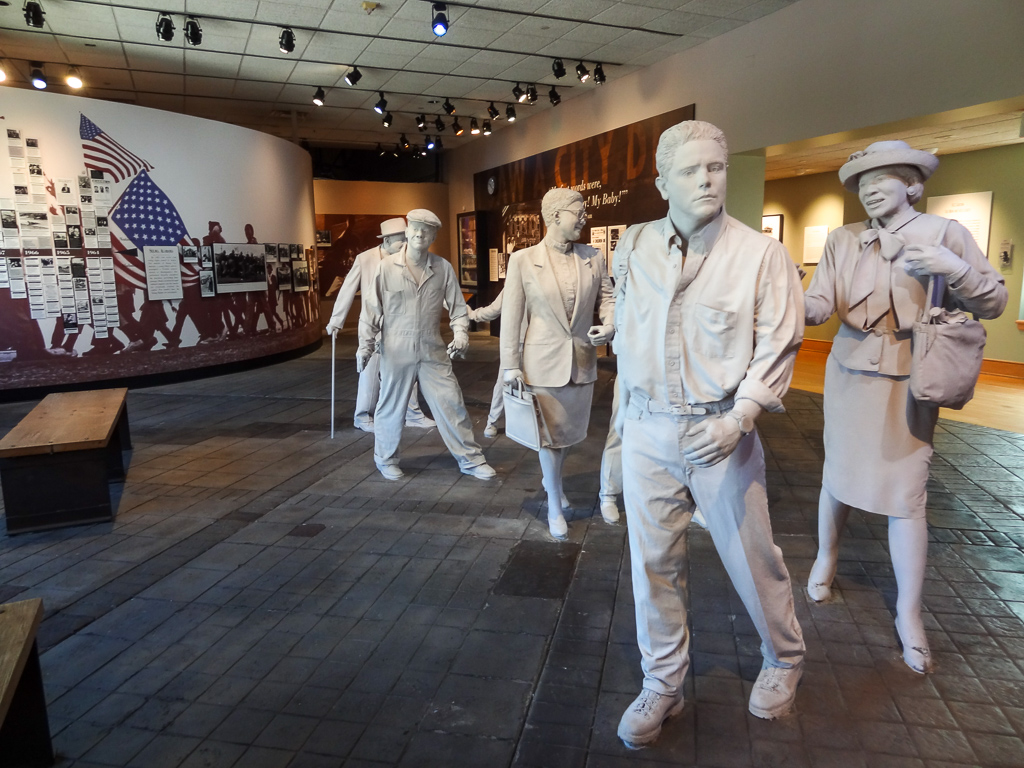There are nine National Parks in Alabama, each with unique experiences to be had. We have had the good fortune of visiting each Alabama National Park, and want to share them with you so you can make the most of your own visit!
I grew up visiting Alabama frequently. My mom was born and raised in Birmingham, and attended college at Talladega College, located only miles from the famous Talladega Speedway. Much of my family still lives in Alabama, so packing up a car and heading down from Ohio to Alabama for holidays and vacations was commonplace in my youth.
Alabama: Welcome to the South
Alabama is a state with a lot of history formed of natural and human history that dates back to 10,000 years BC. The state also was at the center of many momentous events of the Civil Rights movement. Alabama National Parks preserve a lot of this heritage and features a number of protected places that are worth a visit!
How Many National Parks are in Alabama?
There are 9 National Park Units in Alabama.
These sites preserve some of the beautiful national sites in the state as well as the legacy of historical events that unfolded there. Sites like Russell Cave National Monument tell the story of human history along the Alabama-Tennessee border. Here, several tons of artifacts that date back to hunting and gathering nomadic tribes have been found.
Civil Rights history is preserved in places like the Birmingham Civil Rights National Monument and Freedom Riders National Monument. After all, Alabama was at the center of activity during the Civil Rights Movement.



List of National Parks in Alabama
If you’re wondering what National Parks are in Alabama, I will spare you the suspense. All 9 Alabama National Parks are listed below:
- Birmingham Civil Rights National Monument
- Freedom Riders National Monument
- Horseshoe Bend National Military Park
- Little River Canyon National Preserve
- Natchez Trace National Scenic Trail
- Natchez Trace Parkway
- Russell Cave National Monument
- Tuskegee Airmen National Historic Site
- Tuskegee Institute National Historic Site
Jason (my husband and travel companion) and I have been fortunate to have been able to make a meaningful visit to each of the National Parks in Alabama. Each of them is introduced below.
Birmingham Civil Rights National Monument
I am so grateful that the Birmingham Civil Rights National Monument was made a National Park Unit. This site became a National Park unit under President Barack Obama in January 2017. Some of the sites of interest around this park in downtown Birmingham include the 16th Street Baptist Church, the Birmingham Civil Rights Institute, A.G. Gaston Motel, and Kelly Ingram Park.
This park is also located right by Birmingham’s 4th Street District, the location of the historical district where many black-owned businesses thrived in Birmingham’s downtown.
Stamp your National Park Passport at the ticket booth for the Birmingham Civil Rights Institute at 1510 5th Ave N, Birmingham, AL 35203. You won’t get to stamp it yourself as the stamper is behind a window, but the attendant was super nice and stamped well ;-).
Freedom Riders National Monument
The Freedom Riders National Monument is another new National Park Unit. This site honors the history of the Freedom Riders, an interracial group of peaceful protesters that rode integrated buses through the south to challenge discriminatory practices in public transit during the turbulent 1960’s.
One bus was infamously attacked leaving from the Anniston, Alabama bus station. Here, separatists firebombed the bus, attacking it with chains in an attempt to harm to the individuals aboard.



While facilities are still being developed in and around Anniston, there are several sites of interest for folks interested in visiting this park. These include two bus sites in downtown Anniston, the field where the Greyhound bus was firebombed, and the hospital where Freedom Riders were sent to receive care.
Around the corner from the Greyhound bus station is another great park to check out called Zinn Park. Zinn Park is a local park with a pavilion dedicated to Martin Luther King Jr. as well as a Unity House.
Get your Freedom Riders Passport Stamp at the Calhoun Country Chamber of Commerce Economic Development Center 1330 Quintard Ave. Anniston, AL 36201.
Tuskegee Institute National Historic Site
The Tuskegee Institute National Historic Site is located on the beautiful campus of Tuskegee University in Tuskegee, Alabama. This site is home to the first Institute for disseminating knowledge to African Americans in the south during the Reconstruction Era (following the Civil War).
Significant historical figures that made the Tuskegee Institute their home include the Institute’s founder, Booker T. Washington, whose home, The Oaks, is available for tours, and George Washington Carver, the scientist famed for many inventions, most commonly known for his discoveries regarding uses of peanuts.
I found this site to be personally significant as my own great-grandfather was a proponent of education, and spent time studying with George Washington Carver.
Stamp your National Park Passport at the George Washington Carver Museum, a site dedicated to telling the story of George Washington Carver, his personal artifacts, and his contributions Campus Rd, Tuskegee, AL 36088.
Tuskegee Airmen National Historic Site
The Tuskegee Airmen National Historic Site is located at Moton Field. This is one of the training sites for the Tuskegee Airmen, African-American Air Force pilots that heroically and honorably served the U.S. during World War II. Despite many obstacles that these brave men faced (especially in the Jim Crow south), they made their mark on history by becoming the first black aviators and representing the U.S. overseas in battle. The nearby Tuskegee Institute trained many of these pilots.
When you visit the site, you get to explore museums located in two museums. In the Hangar #1 museum, you get to see planes and artifacts (like Air Force uniforms) from the men and women who served. You get to learn about significant figures and see the facilities that housed these soldiers.



When you visit Hangar #2, you get to learn even more about the history. One of my favorite things in Hangar #2 was an emotional series of short video clips of Tuskegee Airmen who reflected on their experience and service. The bookstore is located in Hangar #2, and the displays here are very educational.
Stamp your National Park Passport at Moton Field, in Hangar #2 at 1616 Chappie James Ave, Tuskegee, AL 36083.
Horseshoe Bend National Military Site
When visiting Horseshoe Bend National Military Site, you learn about the sites import in an episode of the history of the War of 1812, and events that took place in Alabama.
The War of 1812 had battles that were fought in Alabama, which surprised me. Being from Ohio, the story of the War of 1812 that I was the most familiar with focused on Ohio and Michigan. I naively hadn’t considered the broader geographic scope of the war. Visiting the site opened my eyes to importance of the War of 1812 on the newly formed United States. Additionally, I was called to consider the impact of the war on future leadership of the country (i.e. Andrew Jackson’s Presidency).
When you visit, start at the park’s Visitor Center and learn about the role of the Battle. Additionally, take the three mile scenic loop drive. On this route, you will drive the field where the action of the battle took place. Getting to the site involved a long and mostly uneventful drive. Learning about this episode in American History, however, made it worth the trek.
Stamp your National Park Passport at the Horseshoe Bend Visitor Center.
Russell Cave National Monument
Russell Cave National Monument preserves the history of nomadic tribes and native peoples that inhabited Alabama. This site preserves human history in the area over thousands of years old. Excavations from the cave have measured in the tons as pottery shards and other artifacts decorated the cave floor. Some artifacts are on display in the park Visitor Center.



When you visit, take time to walk back to the entrance of the cave. There is a boardwalk that leads you about a quarter of a mile back to the cave which runs alongside a stream. While barriers keep you from going deep into the cave, you can stand at the entrance, and see how this provided shelter to many people throughout history.
Stamp your National Park Passport in the park’s Visitor Center.
Natchez Trace National Scenic Trail and Natchez Trace Parkway
Natchez Trace Parkway features 444 miles of the natural beauty of the south. This parkway runs through Alabama, Mississippi and Tennessee and features a number of experiences from hiking, biking, driving, horseback riding and fishing.
There are many trail heads along the 450+ mile trail that make up the Natchez Trace National Scenic Trail that offer varied scenery and highlights a number of historic experiences. A portion of the trail (about 25 miles) passes through the northwest corner of Alabama.
We haven’t visited the portion of the trail in Alabama, but we were able to walk some of the Old Trace Trail in Mississippi on our Hot Springs road trip.
Little River Canyon National Preserve, The Little Grand Canyon of Alabama
Little River Canyon National Preserve is a unique experience. You drive a ways into the countryside, and meander through a few hills to find a state of the art facility. This site, the Little River Canyon Center, is operated by Jacksonville State University. The Canyon Center is fabulously beautiful and features a number of environmentally-friendly features. Features include geothermal heating and cooling, and recycled building materials. This is a great first-stop in the park. Here you watch the park video in the massive auditorium. Park rangers and volunteers are also on site to talk and guide your visit while getting your passport stamped.



From the Little River Canyon Center, you can walk down to the Canyon, or cross the main road to enter the scenic drive. When we visited, we started the hike to the Canyon on foot. Recent rains quickly made it more of a slog than a hike, so we turned around and opted for the drive.
The Scenic Drive takes you 23 miles along the Little River Canyon Rim Parkway. We decided to complete only a portion of the drive. We turned around about halfway out, but still saw several overlooks and mushroom-shaped rock formations before concluding our visit at Little River Falls, one of the park’s three named waterfalls. Check out trails and more at the park’s site.
Stamp your National Park Passport in The Little River Canyon Center: 4322 Little River Canyon Parkway, Fort Payne, AL 35967
What Other Sites Can I Visit in Alabama?
Another National Park affiliated unit is the Selma to Montgomery trail. This site commemorates the history of the Selma march that was led by Martin Luther King Jr. in order to register black voters in 1965.
While not associated with the National Park Service, the Talladega Superspeedway is another neat stop. When you are in Anniston, you are only a few miles away from the Speedway. It’s worth the short drive to check it out.
A Few Notes on Visiting National Parks in Alabama
Best time to visit National Parks in Alabama
Alabama is a beautiful state that is longer north-to-south than east-to-west. It gets pretty warm in the late spring and can be brutally hot in the summer months. That being said, visiting in the fall and the (early to mid) spring is best.
Driving in Alabama
Alabama’s roads are generally wide and easy to travel. While you may experience some changes in elevation, these changes tend to be gentle. If anything, some expanses of road are a little boring to drive.
When you are driving around the city of Birmingham, you may find recent freeway changes a little difficult to navigate. When driving from Birmingham to Anniston, for example, the road dumps you into the downtown. You then have to work your way through city traffic in order to get on the freeway to Anniston. That being said, make sure your GPS maps are up to date!
Do any of the National Parks in Alabama Charge a Fee?



None of the National Parks in Alabama charge an entrance fee to experience. You can stamp your passport for free, but you must pay to tour the Civil Rights Institute in Birmingham. It’s an awesome place that I encourage you to check out. We took our National Parks Pass, but never had to use it. The National Parks Pass does not provide a waiver of fees at the Birmingham Civil Rights Institute. Your AAA membership will get you get a discount.
Conclusion
Take advantage of the next chance to visit Alabama! Enjoy the many beautiful and historical experiences. Happy exploring!




